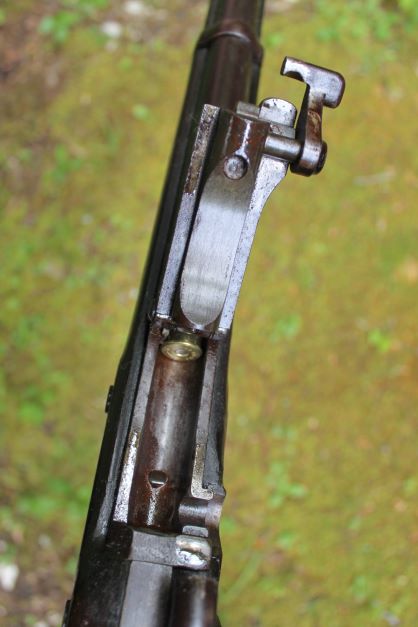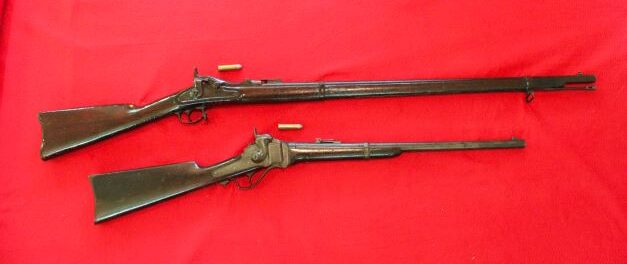
By Jim Dickson | Contributing Writer
People who get their history from the movies are inclined to think the Winchester Model 1892 lever-action was the only rifle used in the taming of the West.
The truth is that the two predominant rifles were the .50-70 Trapdoor Springfield and Sharps rifles in the hands of the military and civilians. Both of these were converted percussion guns from the Civil War. While the M1866 and M1873 Winchesters played a part, it was the powerful long range .50-70 that played the major role in western expansion.
The West was the Great Plains of North America and long range was a tactical problem, and the .50-70 cartridge was the solution. Firing a 450-grain bullet at 1,260 FPS, this round would go all the way through a buffalo at almost any angle. It was capable of sub-minute of angle accuracy, a fact made even more remarkable considering it punches half inch holes, and the old buffalo hunters agreed that it hit harder and was more accurate than the .45-70 that replaced it.
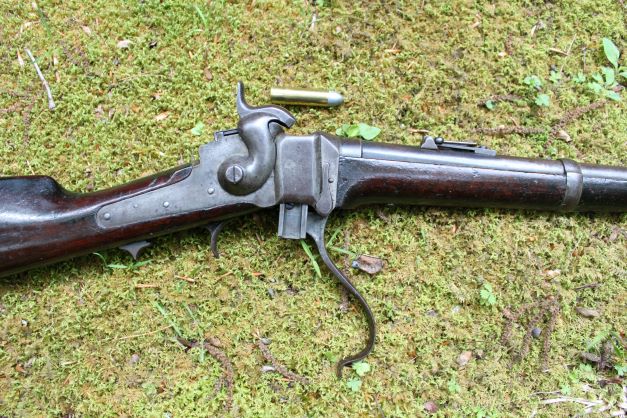
Skilled in the almost lost art of estimating range, hunters often made kills with the .50-70 at far greater distances than men with modern magnums do today. Replacing it was a decision by the military; a ploy by Ordnance .
They apparently also used the fact that England had adopted a .45-caliber cartridge, the .577-450 Martini-Henry round, as an excuse to get Congress to give them the money to start making rifles from scratch again in the new .45-70.
One thing the adoption of the .45-70 did was to make the .50-70 rifles readily available as surplus to civilians resulting in the Springfield and the Sharps becoming a common sight among the buffalo hunters and other frontiersmen. Sears Roebuck was still cataloging them at the turn of the century.
On the frontier the ease of repairing the single shot .50-70’s compared to the much more complicated new lever action repeating rifles was a major selling point as gunsmiths were few and far between and in the early days of the repeating rifles, they were often somewhat of a mystery to many ‘smiths.
The Model 1866 was the first .50-70 Trapdoor Springfield, replacing the Model 1865 version which fired a .58-caliber rimfire cartridge. The barrels of M1863 percussion rifles were relined and a trapdoor breech added to convert 25,000 Model 1863 rifled muskets to breech loaders.
It took only two days in two separate fights to teach the Sioux that the day of the slow firing muzzleloader was over and the White Man had a deadly new weapon. While the muzzleloader could only fire two or three shots a minute, both the Trapdoor Springfield and the Sharps could both easily fire ten aimed shots a minute which is still the most shots per minute that most people can accurately fire with a rifle today. Twenty un-aimed shots a minute and even more were readily achieved which compares favorably with WWII bolt action rifles. All this came to the fore front at two fights, the Hay Field Fight and the Wagon Box Fight.
On August 1, 1867 near Fort C.F. Smith in Montana, 21 soldiers and 9 civilians gathering hay were attacked by several hundred Indians. The retreated to a fortified corral and fought off the Indians successfully.
The next day near Fort Phil Kearny in Wyoming a group of 26 soldiers and 6 civilians were attacked by several hundred Sioux. The circled their wagons and fought off the attacking warriors.
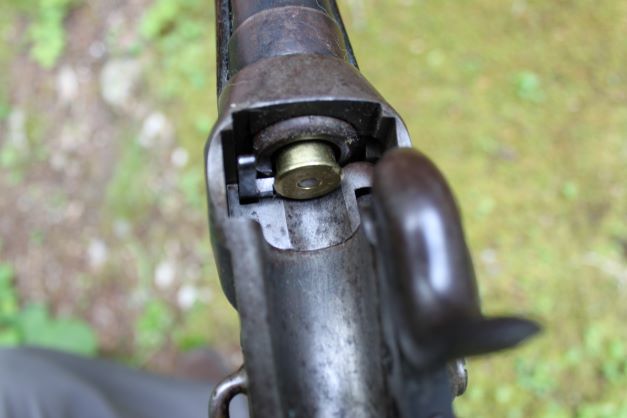
In both fights the Indians pressed the attack for hours yet could not overcome the firepower of the new breech loading rifles. The effect on the Sioux of these relatively small engagements was a decisive factor in the Indian wars.
These guns in civilian hands also wrote history. William F. “Buffalo Bill” Cody’s rifle he called “Lucretia Borgia,” was a Model 1866 Trapdoor Springfield. This was the gun that he said was his favorite when he was on his death bed. No wonder. It was with “Lucretia Borgia” that he killed the buffalo with when he earned the name Buffalo Bill. He said that he had tried all the new guns as they came out and none could shoot alongside the .50-70 needle gun, as the Trapdoor Springfields were called because of their long firing pins.
Cody was comparing the .50-70 Springfield to the 15 to 18 pound Sharps and Remington Rolling Block rifles at the time he was hunting bison and the M1898 Mauser and the M1903 Springfield in later years for he got to shoot all of these. Remember that Buffalo Bill was not only an accomplished long range shot, he was also one of the exhibition shooters in his famous Wild West Show that toured the world in his later years.
Cody used this full length long rifle from the saddle hunting buffalo from horseback as well as long range shooting in classic buffalo hunting style from the ground. During his career as a professional hunter bringing meat to the railroad workers and afterwards he is believed to have killed more than 40,000 buffalo and countless deer and antelope. While he tried all the latest guns, most of this game was brought to bag with his trusty .50-70.
While TV and movies show all the bad guys brought to justice by the sixgun, it was Lucretia Borgia that Buffalo Bill used to track down and bring in a horse thief.
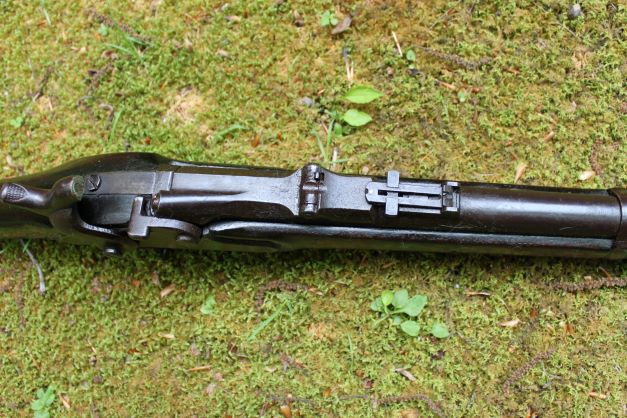
Another famous M1866 user was “Wild Bill” Hickok. He used his when he was a buffalo hunter and later as a lawman he would walk down the middle of the street with it in his hands so that he could see anyone waiting around the corner of a building to ambush him. At his request he was buried with this rifle. That’s how important it was to him.
The Model 1870 featured all new manufacture barrels instead of relined .58-caliber barrels as Ordnance was getting its foot in the door of making complete guns again. The rear sight saw some changes as well. Some 11,350 of these rifles were built from 1870 to 1873 when production stopped with the adoption of the .45-70 Model 1873 rifle. At 9 pounds, 7 ounces the M1870 soaked up the .50-70’s recoil nicely while it’s 4-foot, 3.75-inch overall length made it steady for offhand shooting like the old Kentucky rifles. This is a great gun for placing your shots inside a one-inch mark at 100 yards firing offhand. There aren’t that many more modern guns that are suitable for this type of shooting.
The accuracy and availability of the .50-70 Springfield made it a favorite of the professional buffalo hunters. This was furthered by the fact that the U.S. Army wanted the buffalo wiped out and if you showed up at an Army fort and said that you were buffalo hunting you would often be given a free case of .50-70 ammunition. The end result was that more buffalo were killed with .50-70 Trapdoor Springfields than any other rifle, followed by the .50-70 Sharps Carbine.
During the years that the .50-70 trapdoor Springfield was standard issue, the cavalry used Sharps carbines from the Civil War that were converted to handle the new self-contained cartridge. Originally a breechloader that used paper cartridges it was not difficult to convert these to use metallic cartridges. One point of note is that the Trapdoor Springfield’s bore is .50-caliber but the Sharps bores are .51-caliber. This led Dixie Gun Works in recent years to come out with a mold for a hollow based bullet like a Minie ball that would work equally well in both guns.
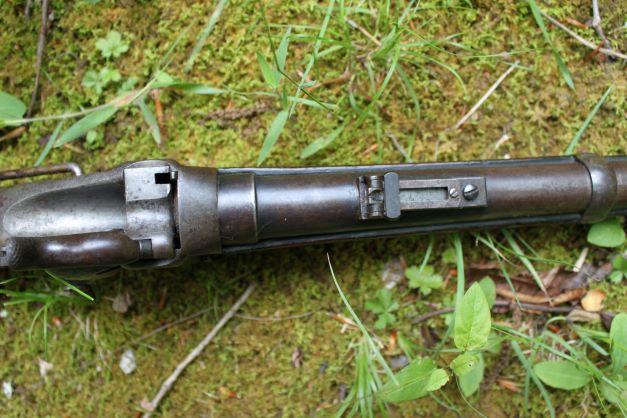
These guns were heavy enough at 7.25 pounds to be pleasant to shoot with the powerful .50-70 round yet they were so perfectly balanced and lively in the hands that they seemed much lighter than they actually were and they pointed accurately and effortlessly. Their 3-foot, 3-inch overall length made them very compact for a mounted horseman. Fired from the ground they had all the accuracy that Sharps rifles were famous for. For buffalo hunting from horseback they were ideal. They could also pick off Indians and outlaws on the Great Plains well beyond the effective range of arrows and the .44 rimfire and centerfire rounds of the early Winchesters.
These were the guns that Texas Ranger Captain Leander McNelly equipped his men with in 1875 when he took on the job of clearing bandits out of the land between the Nueces River and the Rio Grande. He bought them from Sol Lichtenstein, who wanted McNelly to take the more expensive Winchester Model 1873. He argued that if a ranger missed with the Sharps he might not have time to reload the single shot rifle.
“I don’t want men who miss” was McNelly’s curt response. Many outlaws did have repeating rifles but McNelly’s Sharps-armed Texas Rangers cleared them out of the Nueces Strip anyway. The long range of the Sharps and its devastating effect on the horses of the bandits was well noted. There is an old saying “To stop a horseman, stop his horse” and the Sharps does that extremely well.
While not as steady for precision offhand shooting as the long barreled Sharps and Springfields the Sharps cavalry carbines were so perfectly balanced and lively in the hands that one could not ask for a better snap shooting rifle for game that presents only a fleeting moment to hit.
Single shot rifle users on the frontier typically carried a revolver as did most folk back then so they were often unimpressed by the rapidity with which a lever action rifle could empty its magazine. They had a rifle to keep things from getting that close and a revolver if they needed a lot of shots in a hurry. Back then there were plenty of men that could shoot a revolver alongside a M1866 or M1873 Winchester at all ranges.
These two rifles wrote history and rank among the greatest rifles of all time. Their .50-70 cartridge is one of the finest game killers ever made. It outperforms the .45-70 in both accuracy and killing power and will stop bigger game with less recoil than any cartridge I know. It is a national disgrace that the cartridge companies quit loading it in the 1930’s.

